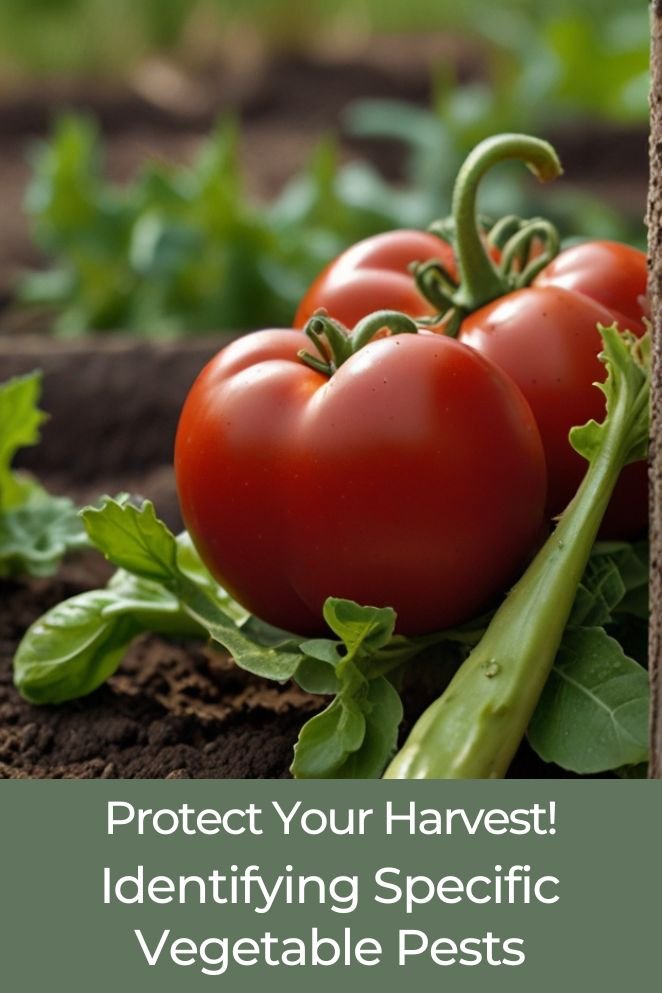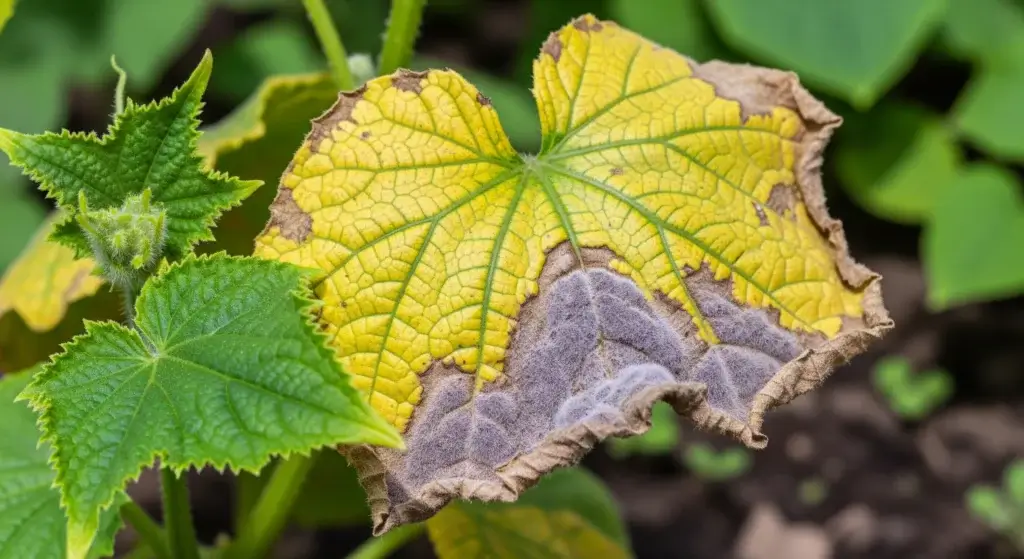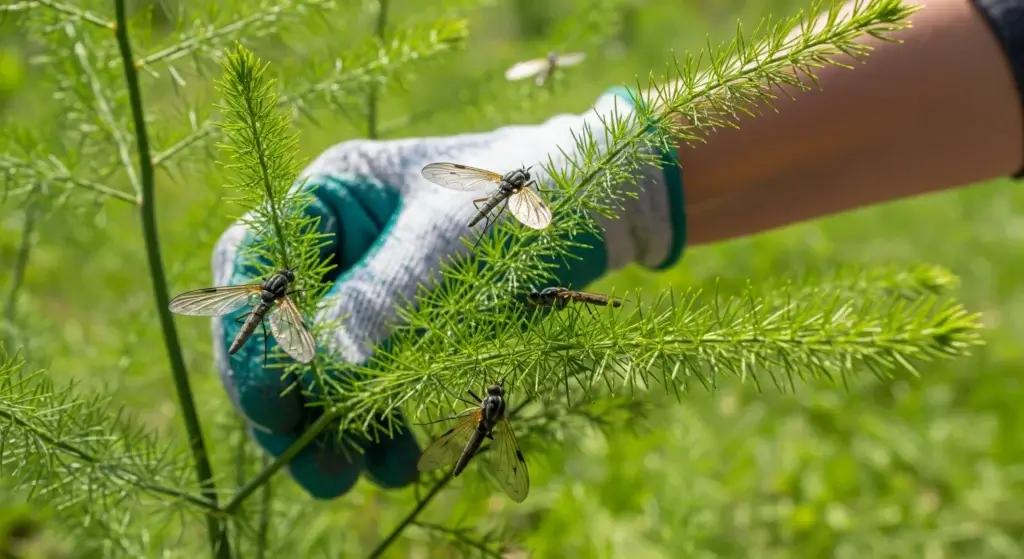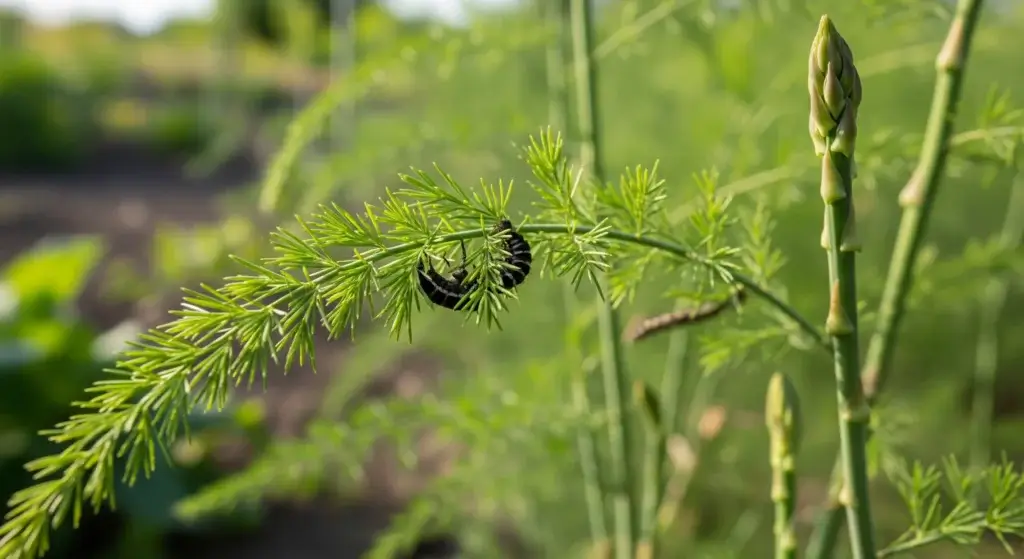
Vegetable gardens are a source of pride and enjoyment for many home gardeners, but they can also be a source of frustration when pests like squash bugs invade.
Squash bugs are a common pest that can cause significant damage to squash plants, leading to reduced yields and poor plant health.
In this article, we will discuss the identification, lifecycle, and habits of squash bugs, as well as organic control methods to manage these pests.
Identifying Squash Bugs
Identifying squash bugs is crucial for protecting your squash plants from potential damage.
These pests are recognizable by their small, flat, and oval-shaped bodies, typically sporting a reddish-brown or greenish-brown hue.
Their unique appearance resembles a shield, with a flat, light-colored head and a darker body.
- Read also: Garden Detectives: Cracking The Signs of Pest in Vegetables
- Read also: Natural Pesticides for Vegetable Garden
Squash bug lifecycle and habits
In terms of their lifecycle and habits, squash bugs undergo complete metamorphosis, progressing through four distinct stages: egg, nymph, adult, and pupa.
Adult squash bugs are primarily active during daylight hours and tend to congregate on the undersides of squash leaves, making them a bit tricky to spot.
Physical appearance of squash bugs
Physically, squash bugs measure around 1/2 inch in length and boast a flattened, oval body.
Their distinguishing feature is their shield-like appearance, with a light-colored head contrasting against a darker body.
Signs and symptoms of a squash bug infestation
Signs of a squash bug infestation include:
The signs and symptoms of a squash bug infestation on vegetable plants include:
- Yellow to bronze colored eggs: These are laid on the underside of leaves, often in the junction of leaf veins, in an orderly cluster and hatch in 7-10 days in summer conditions.
- Yellow to brown spots on leaves: These spots can be an early sign of feeding damage. If feeding is heavy, entire leaves may turn black and dry out.
- Wilting: Squash bugs feed on plant juices and release toxins into leaves, causing wilting that may appear similar to bacterial wilt.
- Black or brown edges on leaves: Leaves may eventually become dry and brown or black along the edges due to feeding damage.
- Fruit damage: Squash bugs can also feed on the fruit, causing scarring that can make the fruit unmarketable.
- Anasa wilt: In severe infestations, the plant may wilt, turn black, and die in a condition known as “Anasa wilt”.
- Reduced yields: High densities of squash bugs can lead to reduced yields and poor plant health.
- Cucurbit yellow vine decline: In some cases, squash bugs can transmit the bacterium Serratia marcescens, which causes Cucurbit Yellow Vine Decline, a disease that can lead to yellowing of the entire vine within a few days and eventual collapse.

Organic Squash Bug Control Methods
When it comes to managing squash bugs in an organic garden, employing prevention and control measures is key to keeping these pests at bay and preserving the health of your squash plants.
Let’s delve into the details of these methods:
Prevention
Row covers
Utilizing row covers is a proactive approach to prevent adult squash bugs from laying eggs on your plants.
By covering your squash plants with lightweight fabric or mesh, you create a physical barrier that denies access to the pests while still allowing sunlight and water to reach the plants.
Be sure to secure the edges of the row covers tightly to prevent any gaps where squash bugs could sneak in.
Planting companion crops
Incorporating companion plants into your garden layout can help deter squash bugs naturally.
Certain plants, such as nasturtiums and marigolds, emit scents or chemicals that repel squash bugs or attract beneficial insects that prey on them.
Planting these companion crops alongside your squash can disrupt the pest’s feeding and breeding patterns, reducing their population and minimizing damage to your plants.
Maintaining garden hygiene
Practicing good garden hygiene is essential for preventing squash bug infestations.
Regularly remove debris, fallen leaves, and weeds from your garden area, as these provide hiding places and overwintering sites for squash bugs.
By keeping your garden clean and tidy, you eliminate potential habitats for squash bugs and disrupt their lifecycle, reducing their numbers naturally.
Control
Handpicking
Handpicking adult squash bugs is a straightforward and effective method of control.
Regularly inspect your squash plants, focusing on the undersides of leaves where squash bugs tend to congregate.
Simply pluck the pests off the plants and dispose of them by dropping them into a bucket of soapy water or crushing them.
It’s essential to wear gloves while handpicking to avoid direct contact with the insects and any potential pathogens they may carry.
Insecticidal soap
Insecticidal soap is a natural and environmentally friendly option for controlling squash bug nymphs and young adults.
This soap disrupts the pests’ cell membranes upon contact, ultimately leading to their demise.
To use insecticidal soap effectively, dilute it according to the manufacturer’s instructions and apply it directly to the affected areas of the squash plants, focusing on the undersides of leaves where squash bugs are commonly found.
It’s important to use insecticidal soap sparingly and only when necessary to minimize any potential harm to beneficial insects and the environment.
Diatomaceous Earth
Diatomaceous earth is a natural, non-toxic pesticide derived from fossilized algae.
It works by physically dehydrating the exoskeletons of squash bugs upon contact, leading to their demise.
To use diatomaceous earth around vegetables safely, apply it in a thin layer around the base of the squash plants, creating a barrier that squash bugs must cross to reach the foliage.
Take care to avoid inhaling the dust while applying diatomaceous earth and wear a mask if necessary.
Reapply diatomaceous earth after rain or heavy watering, as it may lose its effectiveness when wet.

- Read also: Exploring Effective Organic Pest for Protecting Broccoli Plants
- Read also: Natural Caterpillar Repellent: Safeguard Your Garden
Conclusion
Understanding squash bugs and their habits is crucial for gardeners.
These pests can harm squash plants, but with organic control methods, they can be managed effectively.
Squash bugs go through stages from eggs to adults, preferring the undersides of leaves.
Techniques like handpicking, using insecticidal soap, and applying diatomaceous earth can help control squash bug populations without resorting to harmful chemicals.
By combining knowledge with proactive measures, gardeners can protect their squash plants and maintain healthy gardens.



